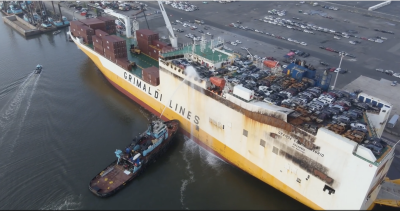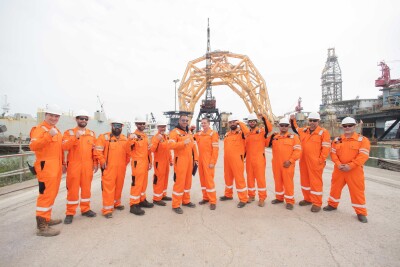Improper manufacturing and inadequate maintenance involving the left front axle housing led to the duck boat crash that killed five people last year on a Seattle bridge, the National Transportation Safety Board (NTSB) has found.
Ride the Ducks International, the manufacturer, should tell its licensees to stop operating their stretch amphibious passenger vehicles (APV) until they repair or replace the axle housings, the NTSB said in a report issued Tuesday. The National Highway Traffic Safety Administration (NHTSA) also should require Ride the Ducks to issue a recall for the safety defect.
Duck boats provide a unique sightseeing experience, said NTSB chairman Christopher Hart, but until now they “have been operating without any regulatory oversight” on land. The manufacturer was not registered with NHTSA, the board noted. Ducks are under Coast Guard jurisdiction in the water.
The duck boats that carry passengers around major cities in and out of the water are a small segment of the passenger vessel market fashioned around the DUKW amphibious trucks built for World War II. Some vessels are all new construction; others are rebuilt on original chassis. Seattle’s Duck 6, the boat involved in last year's accident, was built in 2005 on a 1945 chassis.
The Sept. 24 accident occurred as Duck 6 and a motor coach were traveling in opposite directions on the Aurora Bridge over Lake Union. The duck driver heard a loud noise at the left front of the vehicle, then he lost control and the duck crossed the center line and hit the bus, the NTSB said. Three other vehicles were damaged as well. In addition to the five bus passengers who were killed, 71 bus and duck riders had injuries ranging from minor to serious.
The left front axle assembly that failed on the Seattle duck had an earlier modification to the housing recommended by Ride the Ducks, the NTSB said. The housing fractured due to fatigue cracking and an inadequate stiffening tab, NTSB staff said, and the housing design “is inherently flawed.”
The NTSB also said a lack of seat belts on the duck contributed to injuries. They suggested the Coast Guard issue safety alerts about unbuckling seat belts before the duck goes in the water. And the board wants the Passenger Vessel Association (PVA) to notify duck operators about a variety of safety issues including reducing the risk of driver distraction by having a tour guide — and not the driver — conduct the tour.
Ride the Ducks of Seattle lawyer Pat Buchanan said in an e-mailed statement that the company “has voluntarily taken many of the steps the NTSB discussed today, and the company welcomes working to refine and implement the additional safety enhancements discussed in the hearing.” They have “gone above and beyond what the NTSB or Washington State’s UTC [Utilities and Transportation Commission] has asked of it in working to become the safest commercial fleet in operation.”
Ride the Ducks International said it disagrees with the recommendation to stop operations, since all stretch ducks in service were modified “and subsequently inspected for fractures.” The Branson, Mo.-based company said third-party tests confirmed no systemic issues with the axles. “Additionally, the NTSB did not identify any history or record of problems for this axle ... this was an unprecedented failure.”
The company said in an online statement posted that it has “worked collaboratively with NHTSA to understand their requirements … and today signed an agreement to clarify expectations for our company specifically and the amphibious sightseeing industry generally.”
The NTSB has cited maintenance problems in earlier duck boat incidents. A 2010 accident on the Delaware River in Philadelphia that left two dead and 26 injured was blamed in part on mistakes by tour boat maintenance employees and crew. The NTSB report also showed crew members on the duck and the tug involved were on cell phones or computers. Ride the Ducks Philadelphia shut down last month, citing surging insurance costs as it faces a second fatal accident lawsuit stemming from a pedestrian strike last year.
In 1999, 13 of the 21 people on board the Miss Majestic died after the duck boat sank in 60’ of water on Lake Hamilton, Ark. Passengers were trapped by the canopy roof. The NTSB attributed the accident to poor maintenance, a design flaw, lack of adequate reserve buoyancy, lack of adequate Coast Guard oversight, and the canopy.
Read a summary of the NTSB findings on the 2015 Seattle duck boat accident and view the complete NTSB investigation docket.




.png.small.400x400.png)
